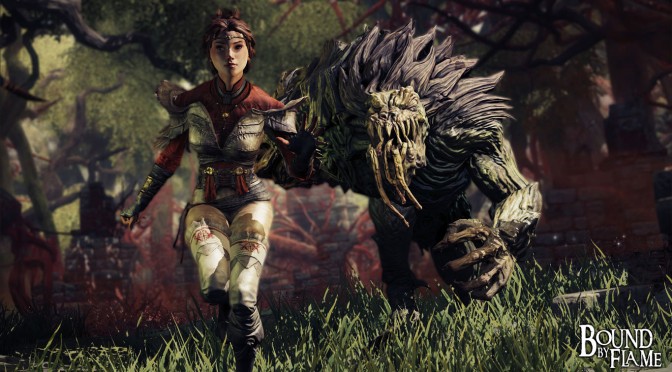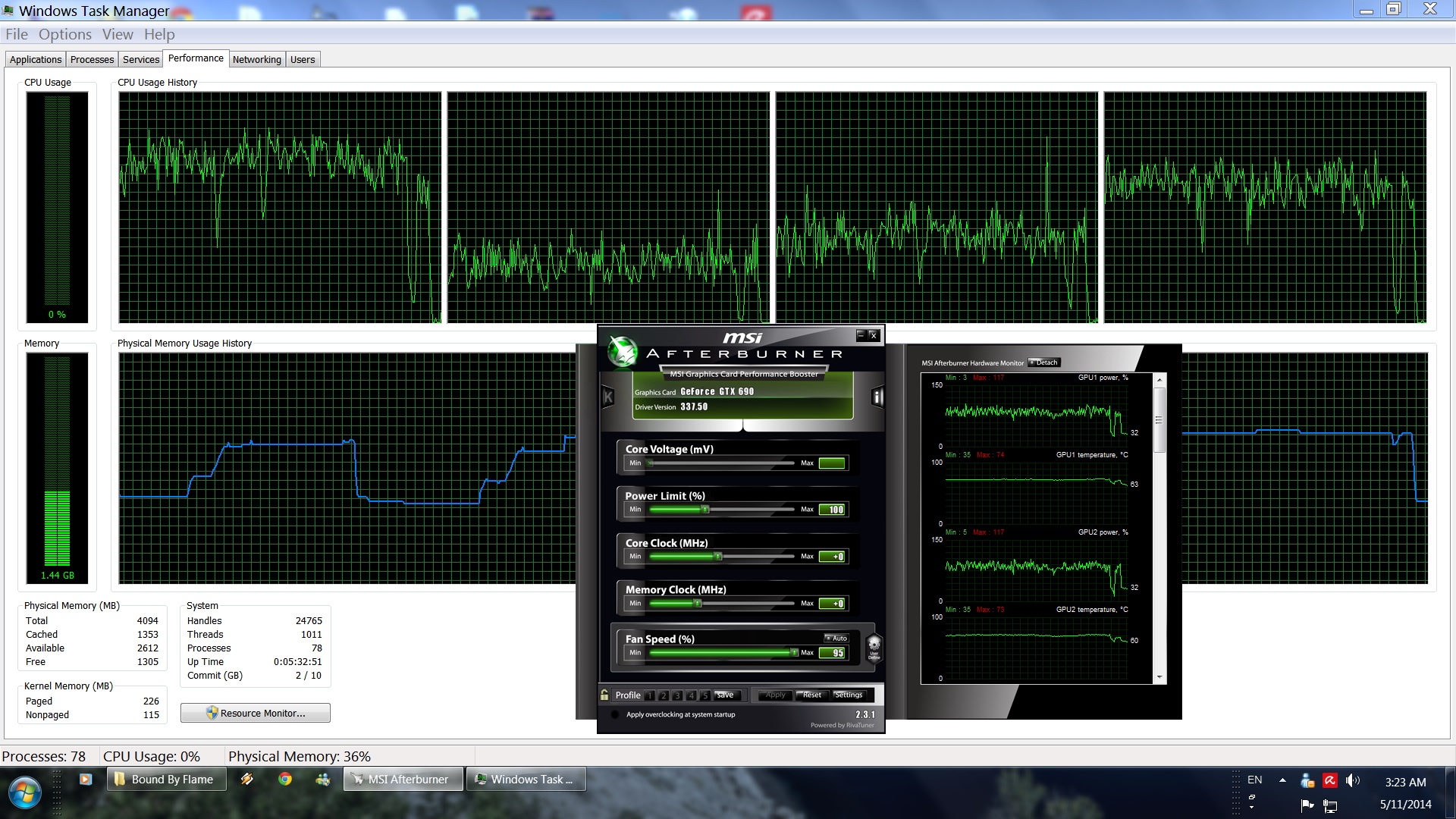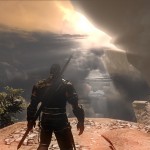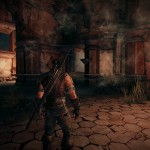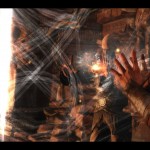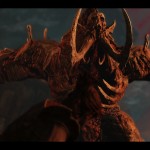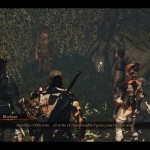Focus Home Interactive has just released Bound by Flame; the latest action RPG that is being developed by Spiders. Bound by Flame is based on the team’s previous title, Mars: War Logs, though it aims to further polish its mechanics and surpass what was described as a ‘game full of potential that did not deliver due to its limited budget.‘ And, frankly speaking, Bound by Flame is a better and more polished game than Mars: War Logs.
Like most of Spiders’ titles, Bound by Flame is powered by the Silk Engine. The Silk Engine supports deferred rendering, HDR, global illumination, ambient occlusion, multiple shadow casters, advanced image post processing, as well as versatile particles systems. Most of these techniques have been used in Bound by Flame, though the overall image quality does not come close to what we’d expect from a game releasing on current-gen consoles and PC.
As always, we used an overclocked Q9650 (4.2Ghz) with 4GB RAM, an Nvidia GTX 690, the latest version of the ForceWare GeForce drivers and Windows 7-64bit. Nvidia has already included an SLI profile for this title, though there are some scenes in which SLI does not scale ideally. We are pretty sure that the green team will be able to increase performance and SLI scalability with an updated profile. Moreover, we noticed some annoying flickering issues – particularly during the cut-scenes and when we were downsampling the game from a 4K resolution – so let’s hope that those too will be resolved sooner than later.
Bound by Flame is a GPU bound title. The game did not stress our Q9650 at all, and there were no performance differences between our simulated dual-core and our quad-core systems. Despite the fact that this is a DX9-only title, Bound by Flame can be highly enjoyed by those with weaker CPUs.
Similarly to Daylight, Bound by Flame has some pretty demanding GPU requirements. A single GTX680 is unable to run the game with constant 60fps at 1080p with Ultra details. In order to achieve something like that, we had to reduce the Shadow quality to “High”. A single GTX690 (or a Titan card) on the other hand runs this title without any issues at 1080p, with all its bells and whistles enabled. What surprised us, though, was the fact that our GTX690 was struggling to run Spiders’ title at 4K. Although Bound by Flame does not pack stunning visuals, it requires really high-end GPUs, especially if you want to experience it at resolutions higher than your typical 1080p.
Graphics wise, Bound by Flame looks okay for today’s standards (well, at least when it comes to multi-platform titles). There are invisible walls all over the places, interactivity is limited, there are only a few objects that can be destroyed, animations are stiff and lack smooth transitions, lip syncing is awful, characters from certain angles look blocky and outdated, and there are a lot of low-resolution textures. The lighting effects feel weird and there is a brown-ish filter that can get somehow annoying. Naturally, PC gamers will be able to further tweak the game’s visuals thanks to SweetFX, though it’s a bit disheartening witnessing new titles that feel so ‘dull’.
All in all, Bound by Flame is a game that requires a mid-tier CPU and a high-end GPU (provided you want to experience it with all its settings enabled). Unfortunately, the visuals that are being displayed do not justify the game’s GPU requirements. Not only that, but Bound by Flame (with the aforementioned settings at 1080p) uses more than 1GB of VRAM, so make sure to disable Ambient Occlusion and reduce the quality of Shadows and Textures in case your GPUs are equipped with less RAM.
Last but not least, we should note that Bound by Flame plays great with keyboard+mouse. Unlike Dark Souls 2, Bound by Flame does not suffer from mouse acceleration side-effects. Furthermore, there are proper keyboard indicators on screen, and all menus can be easily accessed with your trusty mouse.
Enjoy!

John is the founder and Editor in Chief at DSOGaming. He is a PC gaming fan and highly supports the modding and indie communities. Before creating DSOGaming, John worked on numerous gaming websites. While he is a die-hard PC gamer, his gaming roots can be found on consoles. John loved – and still does – the 16-bit consoles, and considers SNES to be one of the best consoles. Still, the PC platform won him over consoles. That was mainly due to 3DFX and its iconic dedicated 3D accelerator graphics card, Voodoo 2. John has also written a higher degree thesis on the “The Evolution of PC graphics cards.”
Contact: Email

